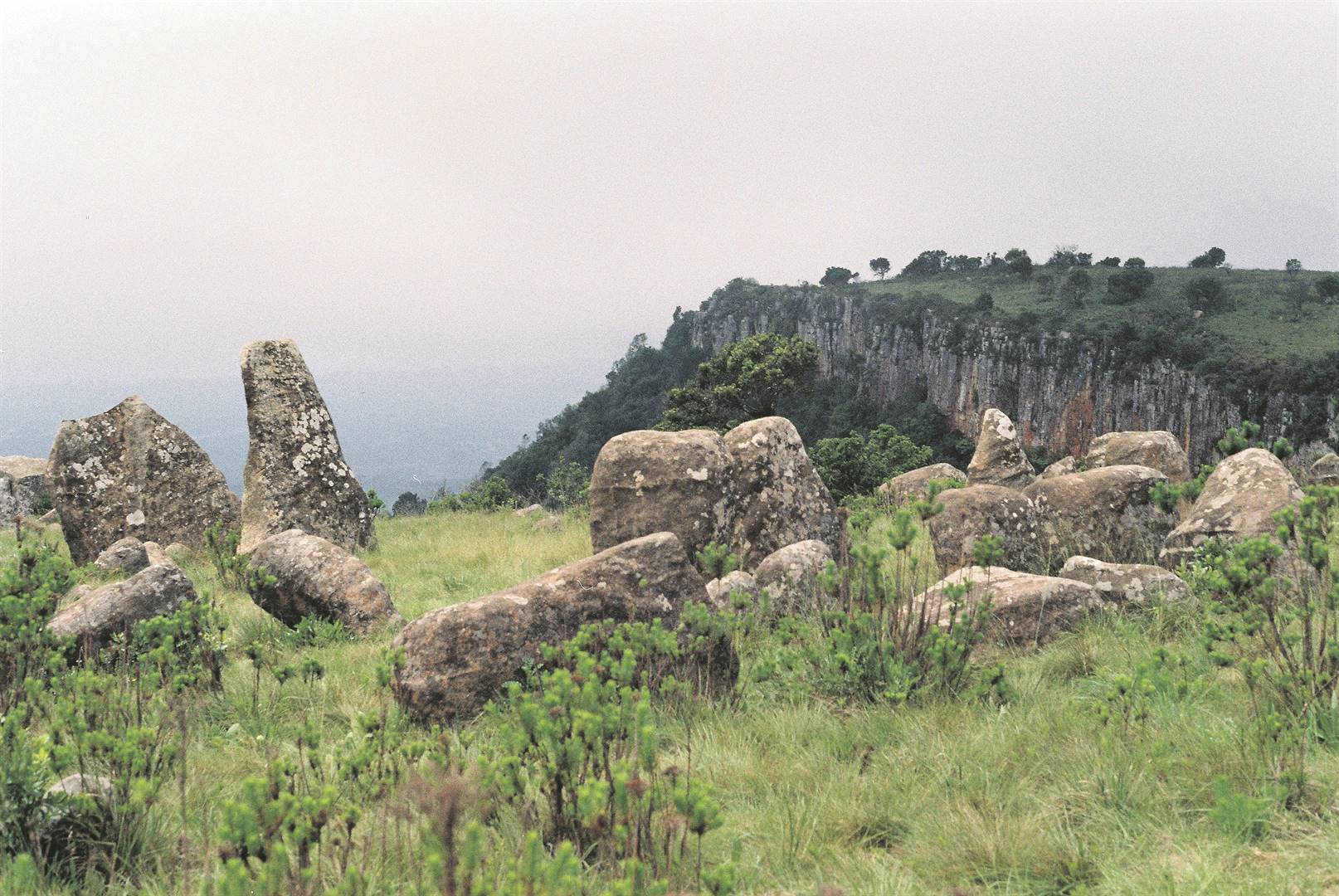Reflecting on Sthenjwa Luthuli‘s solo exhibition, Inzalo Ye Langa: Birthplace of the Sun, Dr Wayne Dooling, Chair of the Centre for African Studies at SOAS, unearths the deeper histories of African creativity and innovation that led to the mesmerising stone wall formations that both inspire and inform Luthuli’s body of work.
Extensive stone walls covering an area of more than 10,000 square kilometres are to be seen across the landscape of South Africa’s Mpumalanga Province. If measured in scale alone, the walls are the most impressive and sophisticated archaeological remains of their kind in all of southern Africa.

As elsewhere on the subcontinent, such as the similarly impressive remains at Great Zimbabwe, racist theorists have sought to deny the indigeneity of the Mpumalanga constructions, instead attributing their origins to external influences. The most fanciful explanations have claimed Indian origins and pointed to the similarities with Hindu temples. Others have proffered equally implausible astronomical explanations, claiming that the stones are 75,000 years old.
The truth, however, is that the stones were built by the African ancestors of present-day inhabitants of the region. Farming peoples associated with Africa’s ‘Iron Age’ entered the region south of the Limpopo River about 2,000 years ago, their arrival representative of the southwards movements of Bantu-speaking peoples from their ancestral home in central Africa, one of the world’s great migrations. The settlement of farmers in eastern South Africa can with some precision be dated to around 1,000 AD. Their material culture strongly resembled that of peoples in Kenya, Tanzania and Mozambique, as did their economy. These farmers entered a region that for millennia had been occupied by hunter-gatherers who most commonly deployed stone tools. Relations between farmers and hunter-gatherers were of several kinds, including clientage and outright domination. In time, however, the farmers prevailed and ultimately displaced the hunter-gatherers.
The communities that settled in present-day Mpumalanga were complex. As was the case with other farming communities in southern Africa, these were agropastoral societies, that is, people kept livestock and planted crops. Chiefdoms were the main political unit as people from diverse origins owed allegiance to a single man. In later centuries, political centralisation led to the emergence of kingdoms. The complexity of these societies is reflected in the legacy of a strong artistic culture, as the details of domestic arrangements are preserved in countless rock engravings. Archaeologists believe that these engravings were largely the work of young men. Nor were these isolated societies, for they participated extensively in long-distance trade extending to the Indian Ocean. Beads and cloth, used for personal adornment and as important markers of status, were among the most favoured imported commodities.
Stone came to dominate the physical layout of these communities. The shift to stone rather than wood in the construction of buildings marked an important shift in the architectural history of southern Africa. In the eastern regions of South Africa, its use became all-pervasive. Agricultural settlements tended to be permanent and the arrangement of physical spaces reflected the gendered division of societies where men tended livestock and dominated the political sphere, whilst women were mainly responsible for crop cultivation and the rearing of children. Production was arranged by homesteads consisting of several households. Homesteads were headed by a single man. These were polygamous societies and important men had several wives. Low stone walls were constructed to separate households headed by adult women. Domestic and political spaces were clearly demarcated and animals were kept in central enclosures. Outer stone walls served to enclose an entire homestead, while inner walls separated animals from domestic living spaces.
The thousands of stone walls thus visible today and which so inspires Stjenjwa Luthuli’s art are the result of great African creativity in organising domestic space, living with animals, and shaping the landscape.
WAYNE DOOLING
SOAS, University of London
Sthenjwa Luthuli
Artist Page
Sthenjwa Luthuli, born in 1991 in Bothas Hill, KwaZulu-Natal, is a South African artist working primarily in carved wooden reliefs and woodcut prints. He is a socially conscious artist who reflects on contemporary South African society.